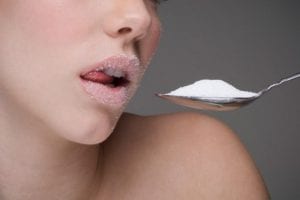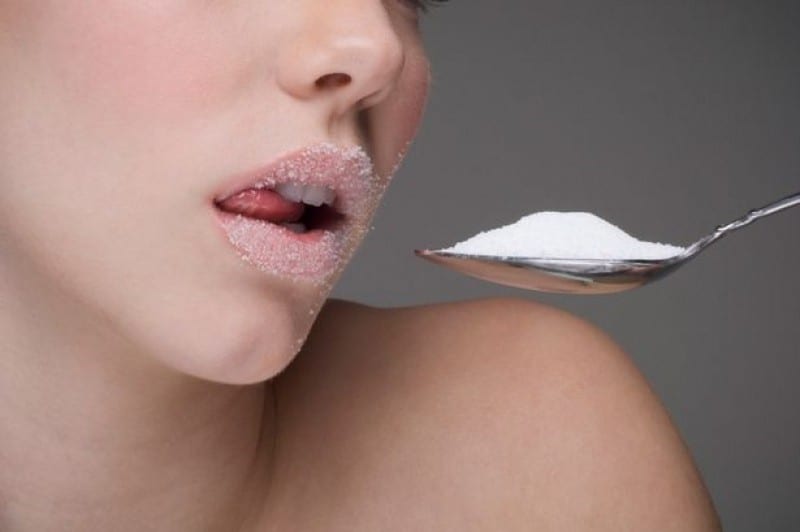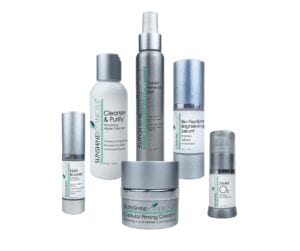MAJOR CAUSES OF AGING

The same browning reaction that occurs when you cook meat at high heat takes place at a slower rate to long-lived tissue proteins such as collagen in our bodies (Dyer 1993). When in the absence of moisture protein meat exposed to heat and carbohydrates, it turns the meat brown. This chemical process called the Maillard reaction. Similarly, in the human body, once sugars enter the circulation, they attach themselves to the amino groups of tissue proteins, such as collagen, to slowly rearrange their youthful structure into the main culprits of damage, called advanced glycation end products (AGEs). AGE molecules are particularly destructive since they can undergo extensive cross-linking with other proteins to form strong chemical bridges. As a result, once healthy collagen fibers lose their elasticity, becoming rigid, more brittle, and prone to breakage (Pageon 2008). Strong scientific evidence also indicates that glycation reactions are promoted by oxidative stress and lead to the production of reactive oxygen species in the skin (Kikuchi 2003).
This assault on the skin’s structural support system contributes to the aging of tissues and, when accelerated by hyperglycemia, to the gradual development of diabetic complications. Not surprisingly, collagen abnormalities with aging and in diabetes share similar roots and have widespread consequences for the skin, such as thinning, discoloration, loss of elasticity, and tendency to rashes and infections.
Laboratory research shows that once formed, AGEs can be self-perpetuating—directly inducing the cross-linking of collagen even in the absence of glucose (Sajithlal 1998). Glycation also induces fibroblast apoptosis (cell death), which creates a state of cellular senescence that has been shown to switch fibroblasts from a matrix-producing to a matrix-degrading state (Alikhani 2005). In this state, the secretion of collagen-degrading enzymes, called matrix metalloproteinases (MMPs), increases, and levels of their inhibitors decline (West 1994).
In fact, glycation directly increases the release of MMP-1, which preferentially breaks down collagen (Pageon 2007). While these assaults on the skin occur internally, external sources of oxidative stress can aggravate skin aging. In particular, sun exposure increases levels of MMP-1 in the skin (Fisher 2002).
Before we see how the skin is affected by glycation, let’s briefly review its structure. In order to provide solid support to external influences, our skin consists of two layers: an outer layer called the epidermis, and the layer below that called the dermis. New cells generated by the dermis are continually being pushed upwards to replace old cells, providing essential support to the epidermis. The dermis itself consists mainly of an extracellular matrix comprised of proteins, especially collagen fibers, elastin, and various glycoproteins, all of which are synthesized by major skin cells called fibroblasts. It also contains hyaluronic acid, which belongs to a class of large, sugar-like compounds known as glycosaminoglycans (GAGs). Hyaluronic acid is capable of holding up to 1,000 times its weight in water and helps to bind water in the skin, providing essential support for the collagen framework as well as protecting the skin’s elasticity.
Protein glycation and AGE formation are accompanied by increased free radical activity in skin collagen, which accelerates skin aging. All of these changes create an environment within the skin that favors the degradation of collagen over its synthesis, compromising the integrity and regeneration of skin tissue.
Sugar is Enemy #1 for Healthy Skin!
Here are a few simple nutritional solutions that can help you radically slow the glycation process!

– Xylitol, Stevia or Maltitol
Skin Benefit: Reduce blood sugar spikes and inflammation, clearer skin, reduced fungal and yeast condition
Substitute Coffee with:
-Teeccino, Green Tea or Vegetable Juice
Skin Benefit: Diminished under-eye puffiness, plumper smoother skin
Replace Refined Flour with:
– Coconut Flour or Almond Flour
Skin Benefit: Reduce facial puffiness and inflammation
Topical Nutrients:
In addition to environmental factors, glycation-induced aging threatens to diminish the skin’s youthful appearance.
- Advanced glycation end products (AGEs) are formed when sugars react with proteins such as collagen, an essential component of healthy skin.
- AGEs threaten healthy skin by reducing the collagen’s regenerative ability and increasing collagen breakdown. The result is wrinkling, creping, and sagging skin.
- Topical nutrients such as blueberries, pomegranate, enzymes (superoxide dismutase), vitamin C, tea blends, and hyaluronic acid can protect against the damaging effects of glycation and oxidative stress on the skin.
- The result is improved skin texture, decreased wrinkles, more elasticity, and protection against ultraviolet-induced damage.
Sunshine Botanicals solution for Glycation & Inflammation –
our AGELESS COLLECTION!
Our Anti-Aging Skin System addresses the signs of aging AND brown spots. Designed to blend science & health with science & nature; marine algae, cutting edge botanicals & vital nutrients revitalize and restore the “healthy glow” of youthful skin.

